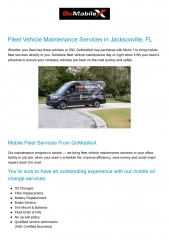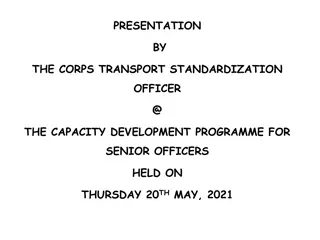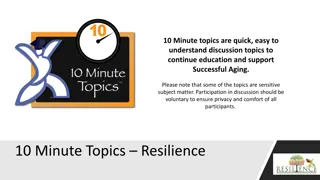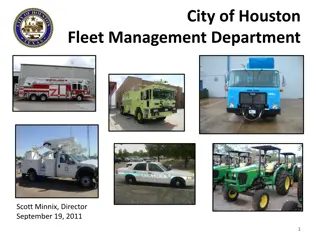Challenges and Solutions in Fleet Resiliency for the Deckplate's Generation
Fleet resiliency for the deckplate's generation faces training gaps, barriers, motivation battles, and toxic leadership issues. Lack of foundational skills and reliance on technical documentation hinder self-sufficiency. Toxic leadership and communication barriers impact motivation and retention. Designing for reality requires addressing manning challenges and system demands effectively.
Download Presentation

Please find below an Image/Link to download the presentation.
The content on the website is provided AS IS for your information and personal use only. It may not be sold, licensed, or shared on other websites without obtaining consent from the author. Download presentation by click this link. If you encounter any issues during the download, it is possible that the publisher has removed the file from their server.
E N D
Presentation Transcript
Fleet Resiliency for the Deckplate s Generation ITCM (IW/SW/AW/EXW) Sean Lyons CNAL Force IT Jennifer Blankenship CNSP Force Cyber Operations Officer UNCLAS
Building a Completely Trained Sailor Training gaps exist within the pipeline, by skipping valuable skill from the beginning. Train buttonology vice actual system understanding. Train towards the quickest or cheapest means, or always trained this way, vice tailoring towards the learning style of today s Sailor. Mission Impact Skills: How do the systems, ship, person impact the mission capabilities? Interconnected Systems Skills: How does the system interact with other systems? System Skills: What is the basic functionality of the system? Foundational Skills: Basic troubleshooting, critical thinking, computing fundamentals. 4
Training Barriers Lack of training from the bottom up increases dependencies on technical documentation and help desk support. Reduces self-sufficiency at the deckplates. Tech pubs don t always match system configuration, and lack of critical thinking/outside of the box thinking leaves Sailors at a standstill. Reliance on outside organizations causes delays in resolution. Manning doesn t support time to home grow skills. Trained on systems, then sent to commands where training isn t used. Results in skill atrophy. Leaves disillusionment of purpose why am I even here? 5
Toxic Leadership or Communication Barrier? 2019 USNI DARE conference asked two questions how do we change the risk-adverse culture and how do we fix retention? Results led to same core issues. Perception that leadership cares more about themselves and their career than their people. Not team players do as I say because I say so vice explaining the why or the benefit. Communication up and down lost in translation or hidden. Failure to be empowered results in failure to be motivated and re-enlist. I joined the Navy to make a difference; instead, I m pushed to the side. My leadership won t let me troubleshoot because they don t trust I won t break it. Risk adverse culture prevents Sailors from taking a chance to succeed, in fear of failure. Afraid of being on the Navy Times front page. Failure to learn from mistakes, and provide a means to bounce back. 7
Designing for Reality Manning challenges include lack of distributable inventory, as well as lack of space onboard to meet the system demands. When designing a system, ask the following: Can this be done offship? Can this be done through technology? Is this duplicative of something that already exists? What human-based tasks are nice to have vs. must have? What is the true cost of a system, vice price? 8
Contact Information ITCM (IW/SW/AW/EXW) Sean Lyons, Force IT, COMNAVAIRLANT sean.t.lyons@navy.mil / sean.t.lyons@navy.smil.mil 757-836-8815 Jennifer Blankenship, Force Cyber Operations Officer, COMNAVSURFPAC Jennifer.blankenshi1@navy.mil / Jennifer.l.blankensh@navy.smil.mil 619-437-2026 9























